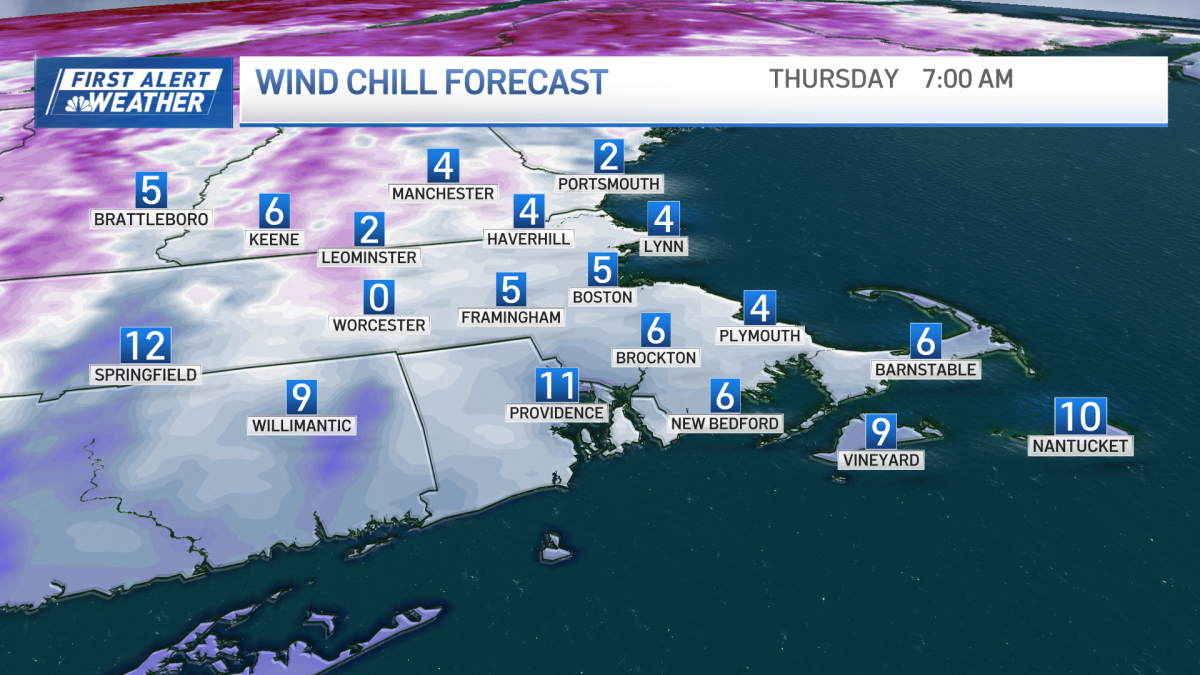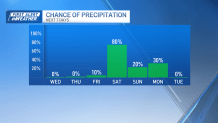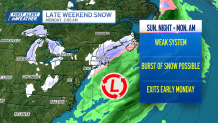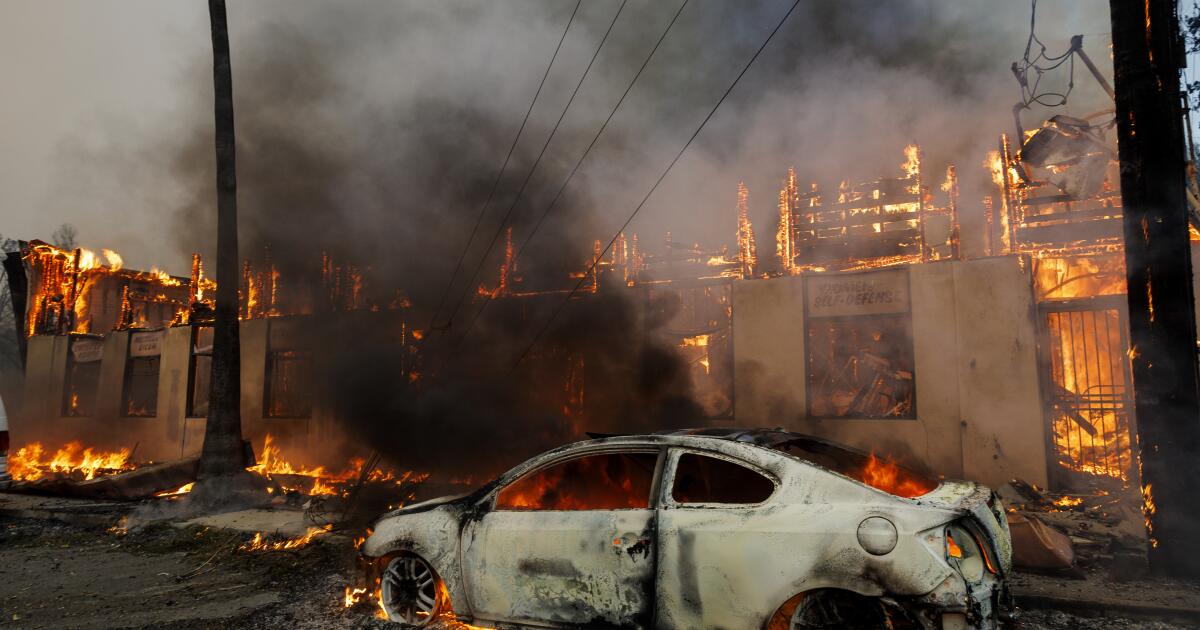Boston, MA
Incomes grew in Greater Boston last year, but not as fast as inflation – The Boston Globe

Even as Greater Boston bucked troubling national trends on poverty last year, the typical household income grew at just half the rate of inflation, and far slower than most other major metro areas, according to Census data released Thursday.
The new figures, based on an annual survey, peg the median household income here at $104,299 in 2022, up from $100,750 the year prior. That still ranks Greater Boston among the most affluent places in the country. But the annual increase of 3.5 percent was outpaced by all but two of the nation’s 40 largest cities, including regions mostly in the Sun Belt and Florida that saw double-digit income gains. Statewide, the median income increased by 5.4 percent to $94,488.
Economist Brian Bethune said Massachusetts likely saw slow growth in income last year because much of the state’s labor force works in higher-paying industries.
Early in the pandemic, the economies of less affluent states were battered by the loss of service workers, including servers, hotel employees, and baggage handlers. But an uptick in spending on travel and leisure later bolstered demand for those jobs, and a tight labor market increased what employers had to pay to fill them. Massachusetts, by contrast, saw less of a dip in lower-wage work — and now, less of an increase in income at large.
“States that are more concentrated in technology and finance — Massachusetts — did not see as much of a cycle,” Bethune said.
Yet costs here climbed, meaning that modest wage growth may have felt to many people like falling behind. A key measure of inflation rose by 7 percent in 2022, and the price of housing and childcare are still on the rise. Meantime, a number of public assistance programs that provided additional aid during the pandemic, including rent relief, the child tax credit and expanded food aid, have wound down.
The end of those relief programs has been blamed for a surge in poverty last year, one which Thursday’s data suggests Massachusetts has avoided.
On Tuesday, Census figures showed a sharp rise in the number of people experiencing poverty nationwide, threatening to reverse two decades of progress. The Supplemental Poverty Measure — a broader metric that accounts for the impact of government assistance and geographical differences in the cost of living — rose to 12.4 percent from 7.8 percent, the largest one-year jump on record. The child poverty rate more than doubled.
But here, poverty levels stayed basically level in 2022. The percentage of impoverished families in the Greater Boston metropolitan area fell to 6 percent from 6.4 percent the year prior, according to the Census’ American Community Survey. Only 9.4 percent of people under 18 were in poverty last year, compared to 10.7 percent in 2021.
What’s more, the share of households earning less than $35,000 went down by a single point from 18 percent, according to a Globe analysis of the data.
It is likely that the decrease in poverty is linked to Massachusetts’ continued support of pandemic-era aid programs, advocates said. In the spring, Governor Maura Healey allocated more than $350 million to housing and food assistance programs and passed a temporary extension of extra food stamps afforded to families from 2020. The 2024 state budget put aside $475 million to so-called C3 grants for child care providers, and Healey in August made Massachusetts the eighth state to cover lunch costs for all children in public schools.
Despite the recent successes, Kim Janey, CEO of the nonprofit EMPath and the former mayor of Boston, said there’s much work to still be done.
“As a state and city that leads the way on so many issues, we must do better,” Janey said. “Wages are failing to keep up with inflation, and local families’ budgets are already strained by some of the highest costs of housing and child care in the nation. Not only do we need to see a robust increase in wages, we also need deeper investments in families who are struggling the most.”
Michael Klein, a Tufts University economics professor and editor of Econofact, said the technology sector may be partly to blame for soft wage growth. Local companies, including Wayfair, Hubspot, and Whoop, slashed thousands of jobs recently, impacting the pocketbooks of middle-to-upper-middle-income workers and the health of the local landscape.
“Massachusetts is very tech-heavy,” Klein added. “Whatever happened this year and last, the fact of the matter is that the tech sector is taking a hit.”
Diti Kohli can be reached at diti.kohli@globe.com.Follow her @ditikohli_. Daigo Fujiwara can be reached at daigo.fujiwara@globe.com. Follow him @DaigoFuji.

Boston, MA
Below freezing temperatures again today

The winds are still going Wednesday, but the air temperatures remain at respectable levels. Highs will manage to weasel up to 30 in most spots. It’s too bad we’re not going to feel them at face value. Instead, we’re dressing for temps in the teens all day today.
Thursday and Friday are the picks of the week.
There will be a lot less wind, reasonable winter temperatures in the 30s and a decent amount of sun. We’ll be quiet into the weekend, as our next weather system approaches.
With mild air expected to come north on southerly winds, highs will bounce back to the low and mid-40s both days of the weekend.
Showers will be delayed until late day/evening on Saturday and into the night. There may be a few early on Sunday too, but the focus on that day will be to bring in the cold.
Highs will briefly sneak into the 40s, then fall late day.

We’ll also watch a batch of snow late Sunday night as it moves up the Eastern Seaboard.
Right now, there is a potential for some accumulation as it moves overhead Sunday night and early Monday morning.
It appears to be a weak, speedy system, so we’re not expecting it to pull any punches.

Enjoy the quieter spell of weather!
Boston, MA
Boston City Councilor will introduce

BOSTON – It could cost you more to get a soda soon. The Boston City Council is proposing a tax on sugary drinks, saying the money on unhealthy beverages can be put to good use.
A benefit for public health?
“I’ve heard from a lot of residents in my district who are supportive of a tax on sugary beverages, but they want to make sure that these funds are used for public health,” said City Councilor Sharon Durkan, who is introducing the “Sugar Tax,” modeled on Philadelphia and Seattle. She said it’s a great way to introduce and fund health initiatives and slowly improve public health.
A study from Boston University found that cities that implemented a tax on sugary drinks saw a 33% decrease in sales.
“What it does is it creates an environment where we are discouraging the use of something that we know, over time, causes cancer, causes diet-related diseases, causes obesity and other diet-related illnesses,” she said.
Soda drinkers say no to “Sugar Tax”
Soda drinkers don’t see the benefit.
Delaney Doidge stopped by the store to get a mid-day pick-me-up on Tuesday.
“I wasn’t planning on getting anything, but we needed toilet paper, and I wanted a Diet Coke, so I got a Diet Coke,” she said, adding that a tax on sugary drinks is an overreach, forcing her to ask: What’s next?
“Then we’d have to tax everything else that brings people enjoyment,” Doidge said. “If somebody wants a sweet treat, they deserve it, no tax.”
Store owners said they’re worried about how an additional tax would impact their businesses.
Durkan plans to bring the tax idea before the City Council on Wednesday to start the conversation about what rates would look like.
Massachusetts considered a similar tax in 2017.
Boston, MA
Patience over panic: Kristaps Porzingis and the Celtics struggles

The Celtics aren’t playing great basketball. Coincidence or not, this stretch has coincided with the return and reintegration of Kristaps Porzingis. In 23 games without the big man, Boston has a record of 19-4—with him in the lineup, that falls to a much less flattering 9-7 record.
This has put his value on trial, and opened the door to discussions about whether a move to the bench could be helpful for everyone involved. It’s not a crazy idea by any means, but it’s shortsighted and an oversimplification of why the team has struggled of late.
While Kristaps attempts to slide back into his role, there’s an adjustment period that the team naturally has to go through. That’s roughly 13 shots per game being taken from the collective and handed to one individual. It’s a shift that can impact that entire rotation, but it’s also not unfamiliar to the team—by now, they’re used to the cycle of Porzingis’ absence and return.
KP hasn’t been the same game-breaking player that we’ve come to know, but he’s not that far off. He isn’t hunting shots outside of the flow of the offense, and the coaching staff isn’t force-feeding him either.
This table shows a comparison in the volume and efficiency of Kristaps’ most used play types from the past two seasons. Across the board, the possessions per game have remained very similar, while the efficiency has taken a step back.
He’s shooting below the standard he established for himself during the championship run, but the accuracy should come around as he gets more comfortable and confident in his movements post-injury. Porzingis opened up about this after a win over the Nuggets, sharing his progress.
“80-85%. I still have a little bit to go.” Porzingis said. “I know that moment is coming when everything will start clicking, and I’ll play really high-level basketball.”
In theory, sending KP to the bench would allow him to face easier matchups and build his conditioning back up. On a similar note, he and the starters have a troubling -8.9 net rating. With that said, abandoning this unit so quickly is an overreaction and works against the purpose of the regular season.
It may require patience, but we’re talking about a starting lineup that had a +17.3 net rating over seven playoff games together. Long term, it’s more valuable to let them figure it out, rather than opt for a temporary fix.
It can’t be ignored that the Celtics are also getting hit by a wrecking ball of poor shooting luck in his minutes. Opponents are hitting 33.78% of their three-pointers with him on the bench, compared to a ridiculously efficient 41.78% when he’s on the court. To make matters worse, Boston is converting 37.21% of their own 3’s without KP, and just 32.95% with him.
Overall, there’s a -8.83% differential between team and opponent 3PT efficiency with Porzingis in the game. This is simply unsustainable, and it’s due for positive regression eventually.
Despite his individual offensive struggles, Porzingis has been elite as a rim protector. Among 255 players who have defended at least 75 shots within 6 feet of the basket, he has the best defensive field goal percentage in the NBA at 41.2%. Players are shooting 20.9% worse than expected when facing Kristaps at the rim.
Boston is intentional about which shooters they’re willing to leave open and when to funnel drives toward Porzingis. Teams are often avoiding these drives, and accepting open looks from mediocre shooters—recently, with great success. Both of these factors play into the stark difference in opponent 3PT%.
The numbers paint a disappointing picture, but from a glass-half-full perspective, there’s plenty of room for positive regression. Last season, the starting lineup shot 39.31% from beyond the arc and limited opponents to 36.75%. This year, they’ve struggled, shooting just 27.61% themselves, while opponents are converting at an absurd 46.55%.
Ultimately, the Celtics’ struggles seem more like a temporary blip, fueled by frustrating shooting luck and a slow return to form for Kristaps, rather than a reason to panic. The core of this team has already proven their ability to perform together at a high level, and sticking with the current configuration gives them the best chance to break out of the slump.
Allowing Porzingis to round into shape and cranking up the defensive intensity should help offset some of the shooting woes. As Porzingis eloquently put it, “with this kind of talent in this locker room, it’s impossible that we don’t start playing better basketball.” When water finds its level, the game will start to look easy again.
-

 Health1 week ago
Health1 week agoOzempic ‘microdosing’ is the new weight-loss trend: Should you try it?
-
/cdn.vox-cdn.com/uploads/chorus_asset/file/25822586/STK169_ZUCKERBERG_MAGA_STKS491_CVIRGINIA_A.jpg)
/cdn.vox-cdn.com/uploads/chorus_asset/file/25822586/STK169_ZUCKERBERG_MAGA_STKS491_CVIRGINIA_A.jpg) Technology6 days ago
Technology6 days agoMeta is highlighting a splintering global approach to online speech
-

 Science4 days ago
Science4 days agoMetro will offer free rides in L.A. through Sunday due to fires
-
/cdn.vox-cdn.com/uploads/chorus_asset/file/25821992/videoframe_720397.png)
/cdn.vox-cdn.com/uploads/chorus_asset/file/25821992/videoframe_720397.png) Technology1 week ago
Technology1 week agoLas Vegas police release ChatGPT logs from the suspect in the Cybertruck explosion
-

 Movie Reviews1 week ago
Movie Reviews1 week ago‘How to Make Millions Before Grandma Dies’ Review: Thai Oscar Entry Is a Disarmingly Sentimental Tear-Jerker
-

 Health1 week ago
Health1 week agoMichael J. Fox honored with Presidential Medal of Freedom for Parkinson’s research efforts
-

 Movie Reviews1 week ago
Movie Reviews1 week agoMovie Review: Millennials try to buy-in or opt-out of the “American Meltdown”
-

 News1 week ago
News1 week agoPhotos: Pacific Palisades Wildfire Engulfs Homes in an L.A. Neighborhood















